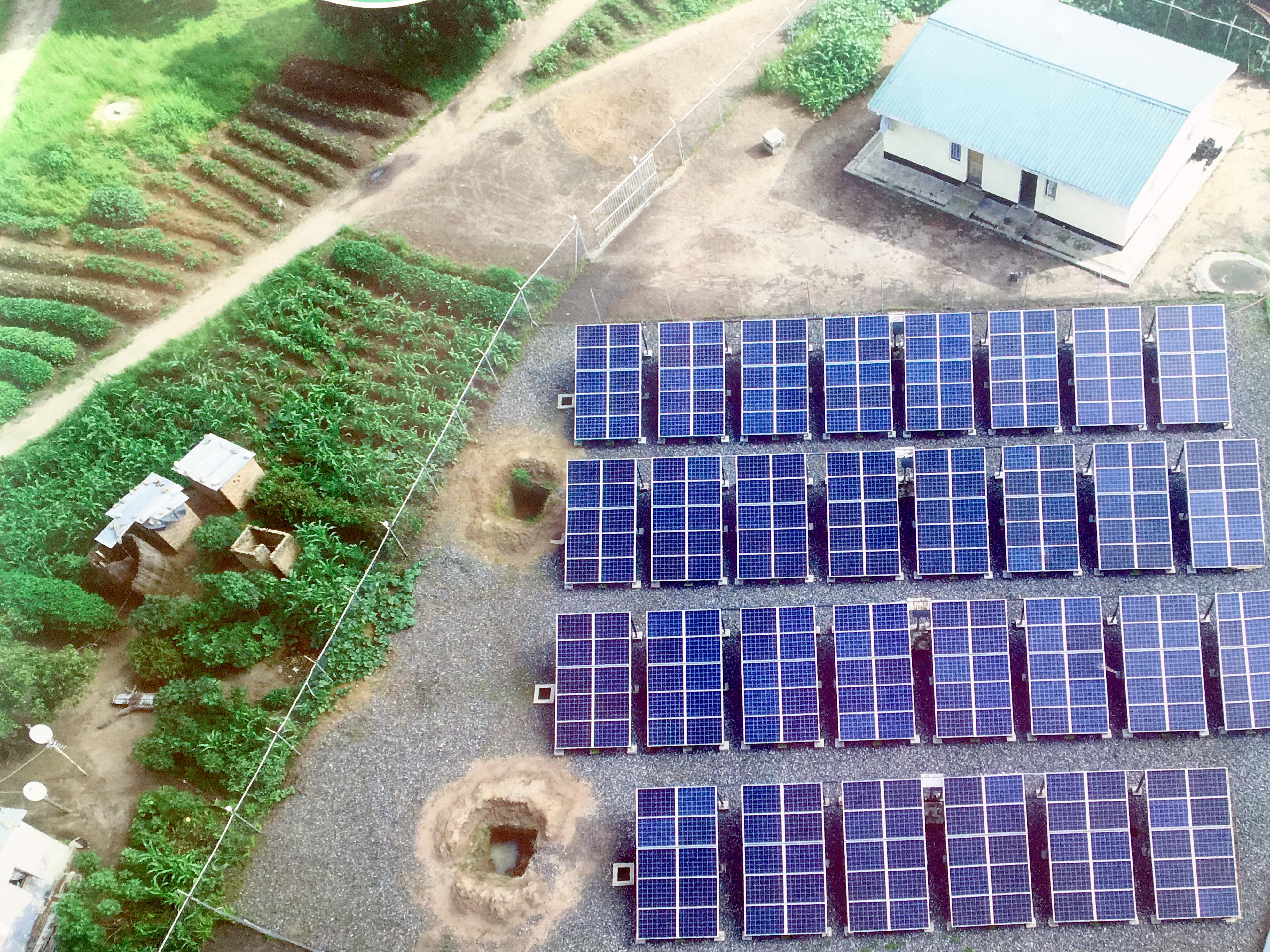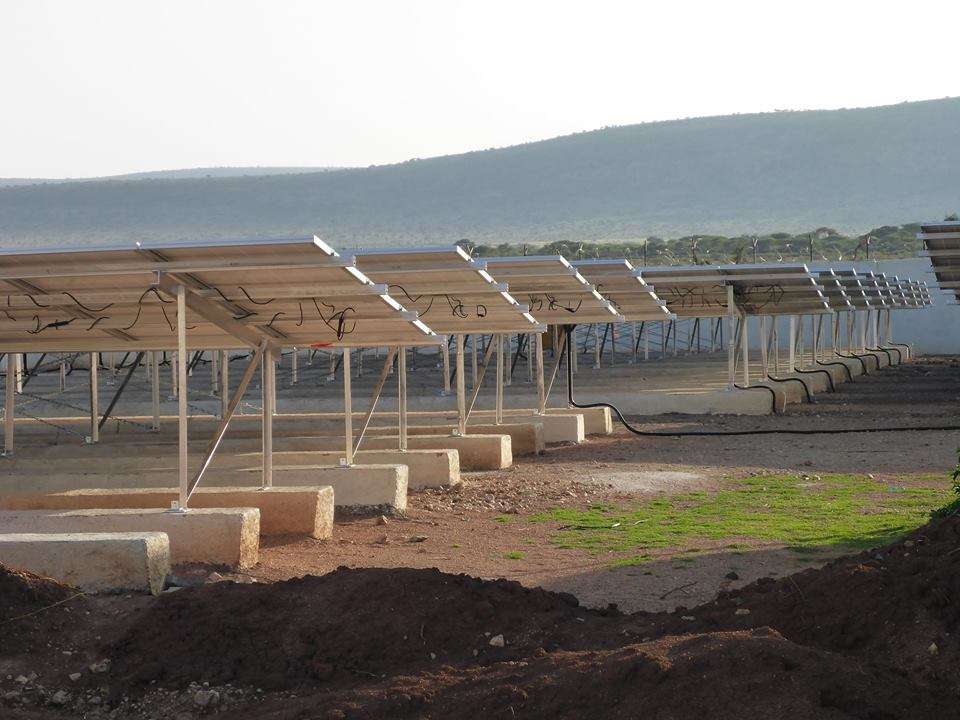
From the oven that cooks your food to the mobile phone that connects you with family to the lights that illuminate your days and nights, electricity is nearly synonymous with our modern lives. But around 800 million people in the world—75% in sub-Saharan Africa—have no access to energy. Not only does this impact country economies, but it also has real implications for individual lives. And in Zambia alone, only 5% of the rural population has access to electricity.
“People in many villages are in the dark, literally,” says Alexander Filippov, Director for DT Global’s EU-funded Increased Access to Electricity and Renewable Energy Production (IAEREP) Project in Zambia. “They can’t use any modern services—women spend hours each day walking to get water or collect firewood, children remain illiterate because they spend time on daily chores instead of school, and families can’t use mobile money or figure out fair prices for market goods without access to the internet.”
National electricity grids deliver power to densely populated urban centers, but don’t extend to many rural Zambian communities. With small villages scattered across vast territories, extending national power lines to meet each village results in high costs for the end user. In some rural areas, populations are more concentrated, but the terrain itself—broken up by mountains, rivers, or swamps—makes it technically difficult to extend the grid.
For these communities, mini-grids are a viable solution. Stand-alone, modular, and often utilizing renewable resources—solar chief among them in Zambia—mini-grids are easy to build in geographically remote locations and cost-efficient for small populations. They also result in lower energy losses than larger grids. Standardized small-scale solutions are already offered in Zambia, such as containers with solar panels and equipment that can be easily installed to provide basic generation in a village. At around 1000 kW on average, mini-grids provide affordable and reliable energy in areas where national grids don’t exist and won’t for years or decades to come.
Though Zambia has fewer than 15 operating mini-grids currently, the sector is well-positioned to expand. The IAEREP project conducted a baseline study showing that mini-grids provide a low-cost electrification option that could serve a large share of the 2 million off-grid households in Zambia. Donor funding is flowing into the sector, as is interest from international private sector companies—making this a cost-effective, realistic option for expansion.
With this growth comes a need for regulation. Private sector companies have an interest in expanding into the mini-grids market but need basic reassurances from the government. Similarly, the government of Zambia wants to make sure energy solutions are safe and environmentally friendly.
“Ultimately, there is a cost/benefit analysis that needs to accompany regulations,” says Filippov. “Zambian mini-grids need enough regulation to protect both the end user and private sector, but the more stringent the regulations, the higher the cost to the end user because the company will pass on these costs.”
While many mini-grids are basic solutions to cater to basic needs—electricity for a water pump, a lamp for a child to study under, some power to charge a cellphone—mini-grids can also be scaled up. When communities have greater access to electricity, their economic productivity grows, and when it does, both demand for electricity and the purchasing power to pay for it increases. When this happens, the regulatory needs also increase.

Prior to 2018, Zambia had no regulations specific to mini-grids. “Practically, this meant that licenses for new mini-grids were issued under specific waivers or under licensing rules used for large, on-grid producers—a process that could take up to two years,” says Filippov.
But often companies ready to invest in smaller mini-grids can move quickly, bringing more immediate benefits to unelectrified rural villages. While regulation is important, excessive regulations can disincentivize investment, forcing rural communities to continue to live without the benefits of electrification.
DT Global’s IAEREP program set out to help fix this. Since 2018, the project has been working with the Government of Zambia to create a regulatory package that provides effective protection for all parties. In February 2020, Zambia’s Energy Regulation Board approved a regulatory framework for Zambian Mini-Grids, developed in partnership with the IAEREP project.
Key to this regulatory package is a three-size model created by IAEREP. Different areas of Zambia require different sizes of mini-grids—from larger facilities to small, simple grids for remote villages. IAREP developed three levels of regulation to match the increasing size and complexity of mini-grids, balancing the need for regulatory protection with needs of a light-handed approach that keeps costs low for energy producers and end users alike. Each level has differences in tariffs, standards, compliance, and monitoring protocols. If a mini-grid scales up with community demand, the regulations can grow to meet its new size.
Regulations are just one part of the mini-grid puzzle. DT Global’s IAEREP is also helping the government to set up a streamlined One Stop Shop mechanism for Independent Power Producers to reduce the time and cost associated with obtaining a license, so that IPPs can bring mini-grids to market with more ease. The Government of Zambia will need to finalize and disseminate regulations, and the private sector will need to continue to ramp up investments in the sector. But with right-sized regulatory packages, Zambia is one step closer to illuminating villages across the country.